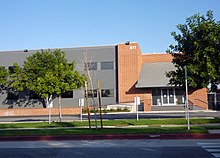Librascope

Librascope was a Glendale, California division of General Precision, Inc., founded in 1937 by Lewis W. Imm to improve aircraft load balancing, and acquired by General Precision in 1941.
Librascope was a manufacturer of early digital computers sold in both the business and defense markets. They hired Stan Frankel, a Manhattan Project veteran and early ENIAC programmer, to design the LGP-30 desktop computer in 1956.
Librascope was eventually purchased by Singer Corporation and moved into the manufacture of marine systems and land-based C3 (Command, Control, Communication) systems for the international defense industry. The company specialized in fire control systems for torpedoes, though they continued to work on a variety of other smaller military contracts through the 1970s.
After Singer was taken over by corporate raider Paul Bilzerian, the company was sold to Loral Space & Communications in 1992. The division was eventually sold to Lockheed Martin and was eventually absorbed into the Lockheed Martin Federal Systems, but is now called Lockheed Martin NE&SS—Undersea Systems.
According to documents on history.nasa.gov, the Centaur second-stage rocket used a "Librascope 3". The Librascope for the Atlas-Centaur deep space launch vehicle was a 25-bit drum computer.[1]
References
- ^ Mark DiVecchio. "Univac Athena Missile Guidance Computer". 2011.
External links
- Librascope Memories, over 60 years of history, including 293 Librazette newsletters, photos, product literature, and company videos.
- LGP-30 description
- LGP-21 description
- Story of Stan P. Frankel, designer of the LGP-30
- Librascope C141 airborne navigation computer
- Librascope L90-I general purpose aerospace computer
- Librascope L600 aircraft and missile guidance computer
- Librascope L2010 general purpose rugged computer
- Librascope L3055 data processor for 473L system
- Air Force 473L global communications system
